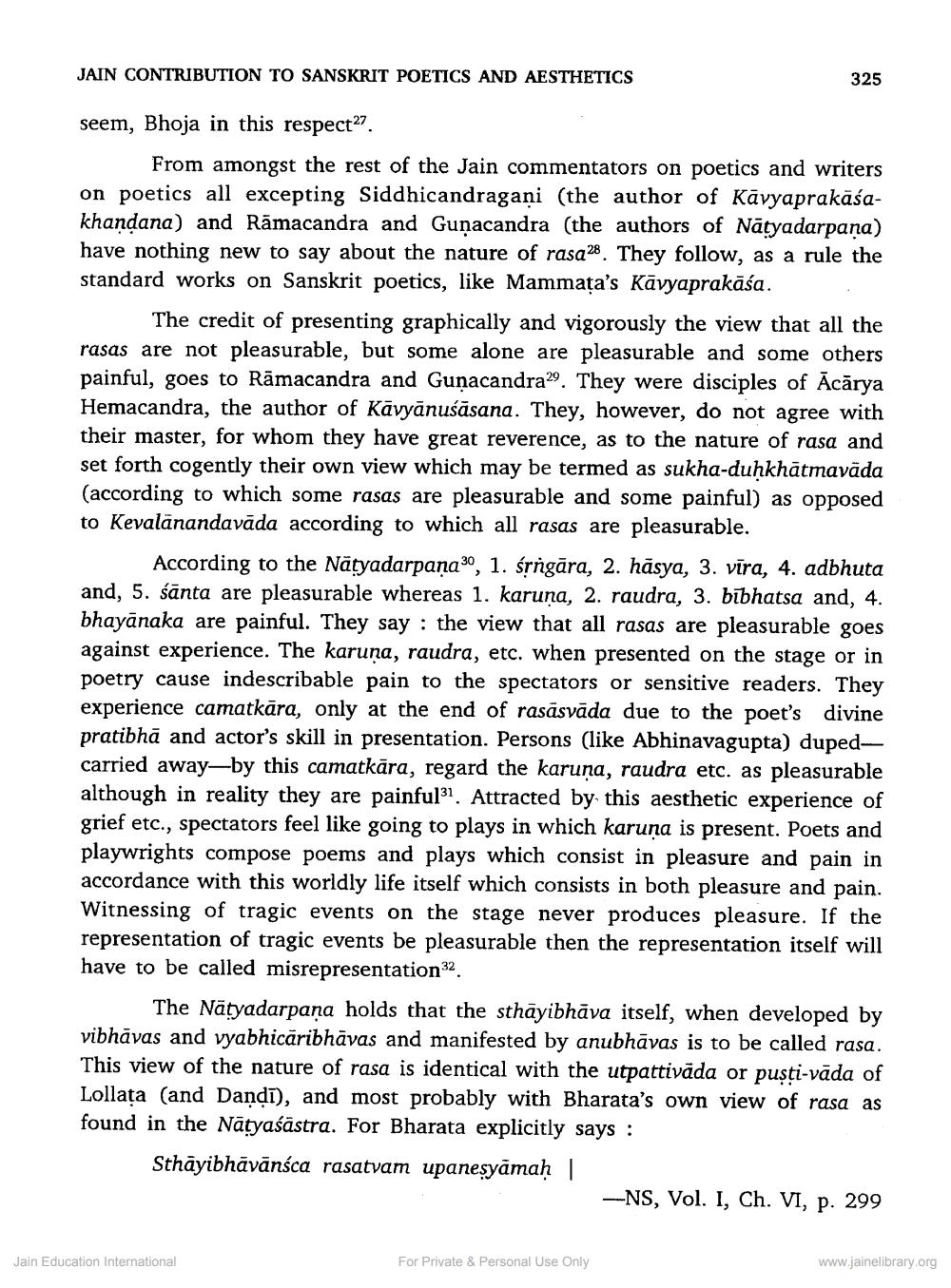________________ JAIN CONTRIBUTION TO SANSKRIT POETICS AND AESTHETICS 325 seem, Bhoja in this respect27. From amongst the rest of the Jain commentators on poetics and writers on poetics all excepting Siddhicandragani (the author of Kavyaprakasakhandana) and Ramacandra and Gunacandra (the authors of Natyadarpana) have nothing new to say about the nature of rasa28. They follow, as a rule the standard works on Sanskrit poetics, like Mammata's Kavyaprakasa. . The credit of presenting graphically and vigorously the view that all the rasas are not pleasurable, but some alone are pleasurable and some others painful, goes to Ramacandra and Gunacandra29. They were disciples of Acarya Hemacandra, the author of Kavyanusasana. They, however, do not agree with their master, for whom they have great reverence, as to the nature of rasa and set forth cogently their own view which may be termed as sukha-duhkhatmavada (according to which some rasas are pleasurable and some painful) as opposed to Kevalanandavada according to which all rasas are pleasurable. According to the Natyadarpana30, 1. srngara, 2. hasya, 3. vira, 4. adbhuta and, 5. santa are pleasurable whereas 1. karuna, 2. raudra, 3. bibhatsa and, 4. bhayanaka are painful. They say : the view that all rasas are pleasurable goes against experience. The karuna, raudra, etc. when presented on the stage or in poetry cause indescribable pain to the spectators or sensitive readers. They experience camatkara, only at the end of rasasvada due to the poet's divine pratibha and actor's skill in presentation. Persons (like Abhinavagupta) dupedcarried away--by this camatkara, regard the karuna, raudra etc. as pleasurable although in reality they are painful31. Attracted by this aesthetic experience of grief etc., spectators feel like going to plays in which karuna is present. Poets and playwrights compose poems and plays which consist in pleasure and pain in accordance with this worldly life itself which consists in both pleasure and pain. Witnessing of tragic events on the stage never produces pleasure. If the representation of tragic events be pleasurable then the representation itself will have to be called misrepresentation32. The Natyadarpana holds that the sthayibhava itself, when developed by vibhavas and vyabhicaribhavas and manifested by anubhavas is to be called rasa. This view of the nature of rasa is identical with the utpattivada or pusti-vada of Lollata (and Dandi), and most probably with Bharata's own view of rasa as found in the Natyasastra. For Bharata explicitly says: Sthayibhavansca rasatvam upanesyamah | --NS, Vol. I, Ch. VI, p. 299 Jain Education International For Private & Personal Use Only www.jainelibrary.org




